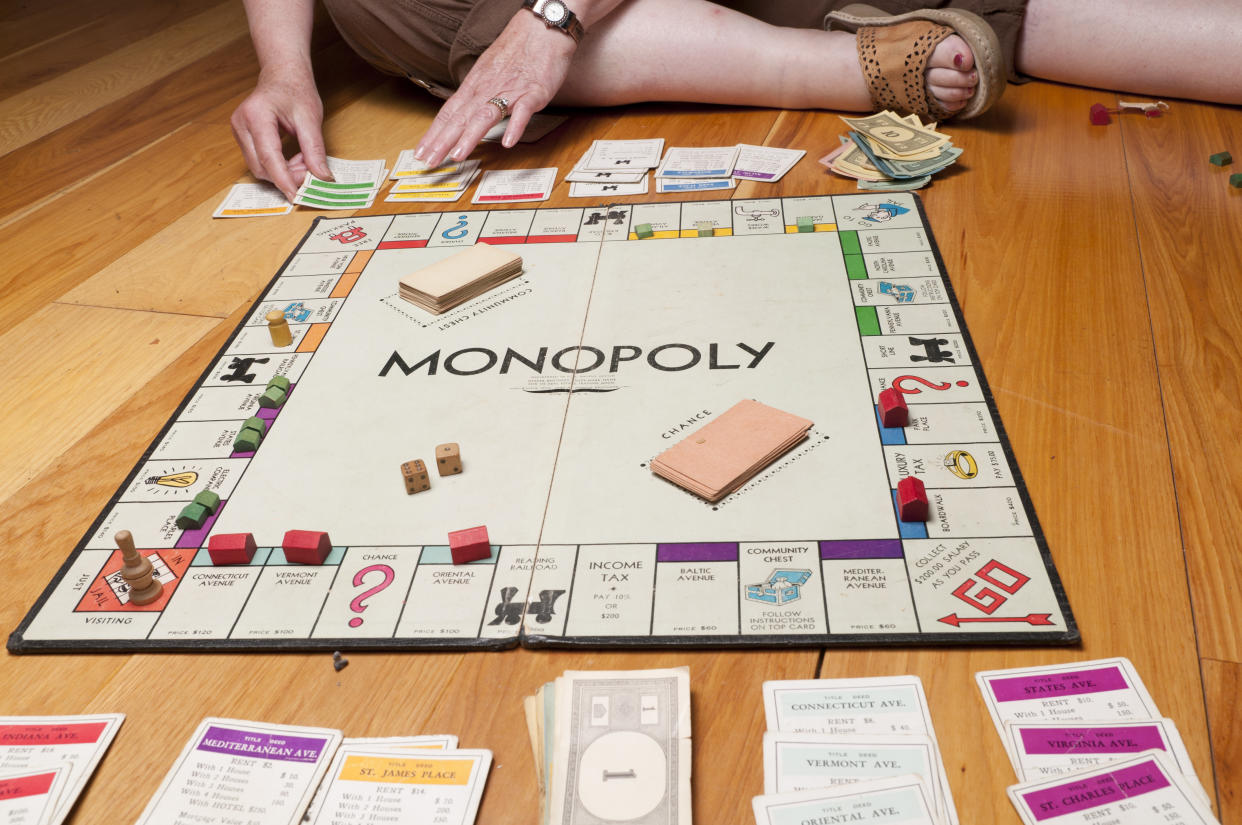How to teach kids about financial literacy — in a way they'll call 'fun'
One morning this past February, 13-year-old Londyn Ivy donned the title of insurance agent, which came with a monthly paycheck of $4,000. Alongside her seventh-grade classmates, she spent a half-day at the Junior Achievement Finance Park in Memphis.
She used her time figuring out how much purchasing power she had, which included determining how much she could spend each month on food, housing, insurance, clothes, and transportation.
“We learned how to budget our money, how much we could spend in a week or in a month,” Ivy told Yahoo Finance. “We had to figure out ourselves what vehicles we could buy or what clothes and what type of food we could afford.”
It was eye-opening for Ivy and her friends to discover how much they had to spend on what they needed before what they wanted, even a bag of potato chips or going to a movie, she said.
What did Ivy spend her money on?
“I bought myself jeans and high heels,” she said. “Sadly, I could not buy a car. I spent too much money on clothes.”
Last year, more than 4.4 million students in 30 cities attended the Junior Achievement program, which was offered through 18,258 schools across the country.
The organization has found a way to make learning about practical money matters, dare I say it, fun.
The students are given a random identity that includes their job, salary, whether they’re married or single, have children, and a credit score. Based on their unique scenario, they walk through various budgeting decisions, moving from one station to the next.
“I felt like my mother,” Ivy said. “The most fun was that I got my own job and my own money, and I got to learn how to budget my own money myself. And at the end, the teachers high-fived us.”

The hope is that Ivy’s early education and excitement about learning about money management will stick and make a difference when she’s on her own. If it works, she’ll be better off than the two-thirds of middle-income Americans who feel their education did not adequately prepare them to manage their finances as adults, according to a new survey from Primerica.
Most of them blamed it on schools for leaving them high and dry when it came to understanding basic tasks such as doing taxes, paying back student loans, taking out and paying back loans, or setting a household budget.
And the younger they were, the more upset they were about it. Seven in 10 Americans between 18 and 34 were the most miserable about the dearth of financial education they received. And people between 25 and 40 came in a pretty close second, along with women over age 65.
How financially literate are Americans?
American adults are not scoring so high in financial literacy, according to the 2024 Personal Financial Index report from the TIAA Institute and the Global Financial Literacy Excellence Center.
Knowledge is money, and when faced with five questions related to Social Security benefits, Medicare coverage of healthcare expenses, employment-based retirement savings, ensuring lifetime income, and life expectancy in retirement, quiz respondents flunked. On average, they correctly answered 2 out of 5 questions correctly.
For those who did nail the quiz, let’s give them that high-five that Ivy received. It turns out they are also very confident they will have enough money to live comfortably throughout retirement, and that’s saying something.
Read more: Retirement planning: A step-by-step guide
The problem of financial literacy in America is getting worse, Michael Roberts, finance professor at the Wharton School of the University of Pennsylvania, told Yahoo Finance.
Ivy is lucky because she’s getting introduced to these concepts early on. Only about two dozen states have financial literacy requirements for high school students, and the best of the bunch require just a one-semester course.

“But there are not enough qualified people to teach this,” Roberts said. “It's taught by math teachers, history teachers, English teachers, and [physical education] teachers. It’s really an afterthought.”
“The goal shouldn't be financial literacy as much as financial proficiency — the ability to make money decisions in life,” he added. Poor financial decisions like waiting to start a retirement savings account for a few years after starting a first job, for example, have ramifications for many years.
The difference between financial literacy and financial proficiency is showing people how to shop for a mortgage, not just telling them what a mortgage is and how it works.
“My Wharton students, for example, will ace any financial literacy test you give them, but as soon as I start putting them through the rigors of you're about to buy an $800,000 home, which mortgage would you take? They have no clue.”
Although the effectiveness of financial literacy classes has been long debated, Carly Urban, a professor of economics at Montana State University, recently wrote that “overwhelmingly, high school financial education improves credit and debt behaviors. Requiring financial education improves credit scores, reduces delinquency rates, reduces the use of alternative financial services (e.g., payday lending), and shifts students from high-interest to low-interest methods of financing a college education.”
Even kindergarteners can learn a need vs. a want
No one argues that the earlier you can start teaching children money concepts, the better.
“Kids are very interested in money, and even in kindergarten, they can learn the difference between a need and a want,” Edward Grocholski, senior vice president of communication at Junior Achievement, told Yahoo Finance.
“Learning has to be experiential to have the most impact. So we place a lot of emphasis on really trying to influence not just the knowledge, but the attitudes towards money in terms of young people feeling like they do have some control in terms of the role money plays in their lives.”
A new resource for financial education was launched last week by Fidelity Investments. Fidelity Youth is aimed at teenagers aged 13 to 17.
“Learning by doing is one of the best ways to help the next generation of investors build a strong financial future,” Kelly Lannan, a senior vice president at Fidelity, told Yahoo Finance.
“Fidelity Youth Baskets gives teens an incredible opportunity to improve their investing skills by managing a portfolio of multiple securities that actually reflect their own interests.”
A parent who has an existing account at Fidelity can open an account on behalf of their teen with no minimum investment. The teenager then downloads the app, activates the account, then hops on board with one of three investment baskets: Clothes, Shoes & Beauty; Gaming, Social Media & Connectivity; and Entertainment. Each basket includes 10 individual stocks but is managed like a single investment. Stocks include Meta, Apple, and Alphabet, Nike, Lululemon, Abercrombie & Fitch, Gap, Netflix, Disney, Live Nation Entertainment, Fox, and Roku.
A teen-friendly educational video about basket investing explains how baskets work.
Some safeguards are in place: A parent must initiate and approve opening the account and retain the ability to close it at any time. They are allowed to review statements, trade confirmations, and account transactions. They can’t, however, make any transactions on their own or take money out of the teen’s account. Accounts must be converted into a standard Fidelity brokerage account when teens turn 18.

Not ready to go that far? You can’t go wrong with the classic board game Monopoly, which currently costs around $30 on Amazon. It’s my first memory of money, and I still smile, remembering the rowdy games I played alongside my siblings, friends, and sometimes even Mom and Dad.
As for Ivy: “My very good fortune is that I’ve been saving since I was eight and now have $500,” she said. “It’s not in a bank account, though, I have it hidden.”
Kerry Hannon is a Senior Columnist at Yahoo Finance. She is a career and retirement strategist, and the author of 14 books, including "In Control at 50+: How to Succeed in The New World of Work" and "Never Too Old To Get Rich." Follow her on X @kerryhannon.
Read the latest financial and business news from Yahoo Finance
